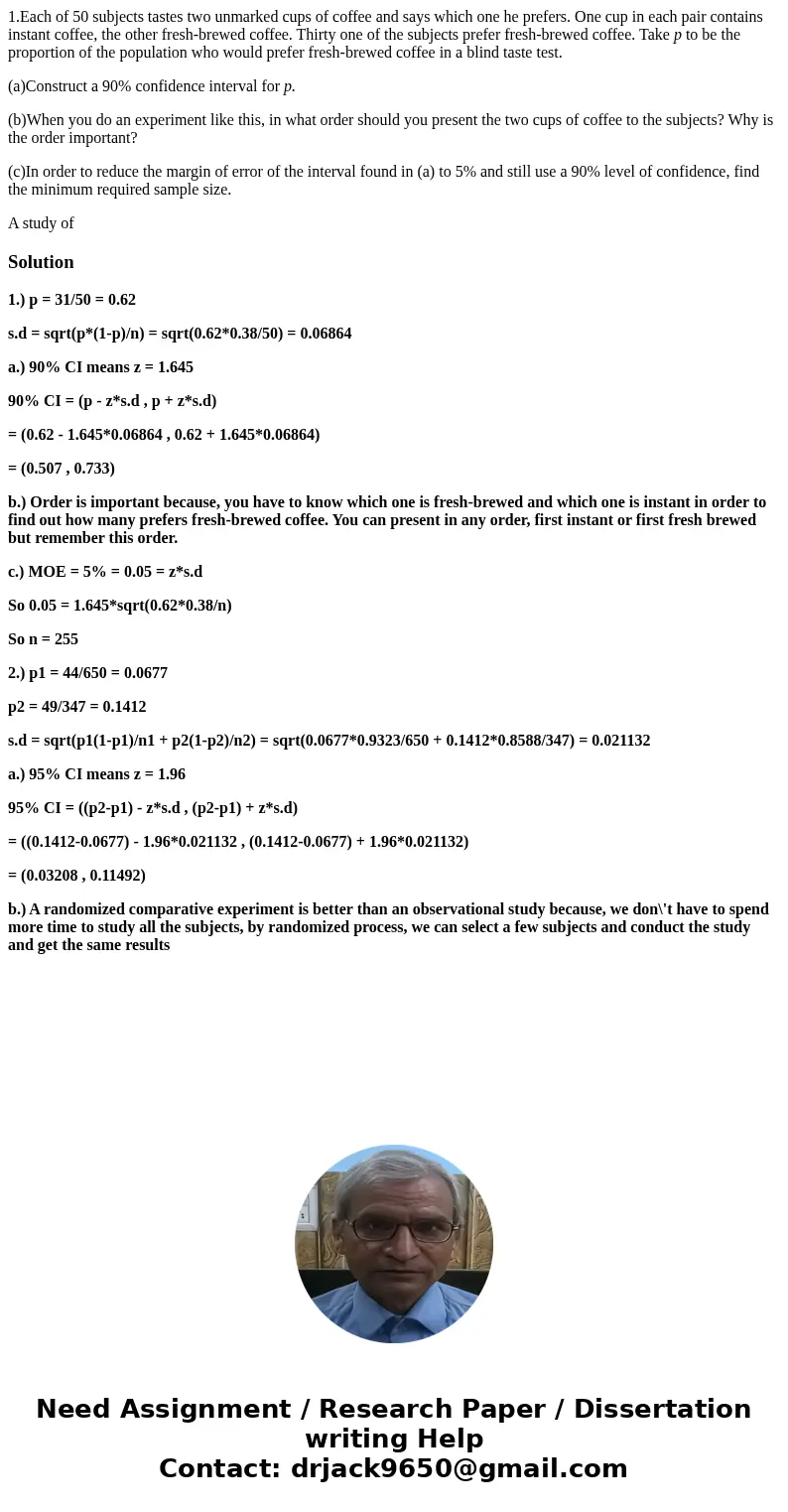1Each of 50 subjects tastes two unmarked cups of coffee and
1.Each of 50 subjects tastes two unmarked cups of coffee and says which one he prefers. One cup in each pair contains instant coffee, the other fresh-brewed coffee. Thirty one of the subjects prefer fresh-brewed coffee. Take p to be the proportion of the population who would prefer fresh-brewed coffee in a blind taste test.
(a)Construct a 90% confidence interval for p.
(b)When you do an experiment like this, in what order should you present the two cups of coffee to the subjects? Why is the order important?
(c)In order to reduce the margin of error of the interval found in (a) to 5% and still use a 90% level of confidence, find the minimum required sample size.
A study of
Solution
1.) p = 31/50 = 0.62
s.d = sqrt(p*(1-p)/n) = sqrt(0.62*0.38/50) = 0.06864
a.) 90% CI means z = 1.645
90% CI = (p - z*s.d , p + z*s.d)
= (0.62 - 1.645*0.06864 , 0.62 + 1.645*0.06864)
= (0.507 , 0.733)
b.) Order is important because, you have to know which one is fresh-brewed and which one is instant in order to find out how many prefers fresh-brewed coffee. You can present in any order, first instant or first fresh brewed but remember this order.
c.) MOE = 5% = 0.05 = z*s.d
So 0.05 = 1.645*sqrt(0.62*0.38/n)
So n = 255
2.) p1 = 44/650 = 0.0677
p2 = 49/347 = 0.1412
s.d = sqrt(p1(1-p1)/n1 + p2(1-p2)/n2) = sqrt(0.0677*0.9323/650 + 0.1412*0.8588/347) = 0.021132
a.) 95% CI means z = 1.96
95% CI = ((p2-p1) - z*s.d , (p2-p1) + z*s.d)
= ((0.1412-0.0677) - 1.96*0.021132 , (0.1412-0.0677) + 1.96*0.021132)
= (0.03208 , 0.11492)
b.) A randomized comparative experiment is better than an observational study because, we don\'t have to spend more time to study all the subjects, by randomized process, we can select a few subjects and conduct the study and get the same results

 Homework Sourse
Homework Sourse